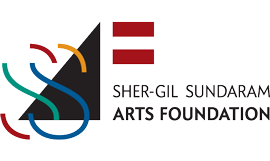The Sher-Gil Sundaram Arts Foundation is pleased to announce the fifth edition of the Umrao Singh Sher-Gil Grant for Photography. Recognizing the need to enable Indian photographers to produce and share their work in their lifetime, the Sher-Gil Sundaram Arts Foundation has pledged an annual photography grant of INR 5,00,000 in Umrao Singh Sher-Gil’s name to encourage independent voices in photography.
Umrao Singh Sher-Gil’s (1870-1954) relationship with photography in his lifetime was a private affair — his principal subjects being his family and himself. He tended to be overshadowed by the emblematic presence of his daughter and artist, Amrita Sher-Gil (1913-1941). It was in 2007 that Umrao Singh was recognised as a photographer of considerable importance. His self-portraits span almost sixty years and make up a unique archive. He is now regarded as a pioneering figure of the mise-en-scène or staged photography in India.
Established in 2015, the Umrao Singh Sher-Gil Grant for Photography will recognise a photographer’s commitment to the ‘staged’ or ‘constructed’ image. Documentary photography projects using the idiom of the staged or constructed image will also be considered.
There is a distinction, albeit a fine one, between the ‘staged’ and the ‘constructed’ image. Regardless, both genres reflect on the transformative nature of the photograph in their relationship to reality.
The grant is intended to assist photographers who have started a project and need financial help to complete their work.
ELIGIBILITY CRITERIA
- The grant is for Indian nationals who reside in India.
- There is no age limit for applicants to the grant.
- Individual photographers and collaborative projects can apply.
- The grant is for a photographer already working on a project.Therefore, the application must include photographic prints from the project for which financial support is needed.
See under Application Process
- Applicants must not hold any other fellowship/grant for the proposed project when applying.
- Applicants must confirm in writing the proposed project has not been exhibited in a commercial gallery in India or abroad. Projects which have been exhibited will not be considered. Exposure of works from the proposed project across social media platforms is acceptable.
APPLICATION PROCESS
Application Form
Application forms can be downloaded from here There is no application fee.
Please use block/capital letters to fill in the application form and do not forget to sign the document. The filled-in application form should be accompanied by the following:
Written Proposal
Clarity of thought about the project will be evaluated during the jury process.
The written proposal comprises of the following. Please submit 3 printed copies of each of the required documents.
- Artist statement:
- The Artist Statement should be concise and not exceed 500 words.
- The applicant should articulate their intentions and define the scope of the project.
- The applicant should clearly mention the stage their project has reached and why it needs financial support to conclude it. This grant is for a work-in-progress project only.
- The applicant should highlight their efforts and objectives towards the realizing the project.
- The applicant must mention the exposure, if at all, this project has received across social media platforms and online magazines.
- Biography of the Applicant (download form)
- Budget Plan The proposed project has to completed within 18 months and a comprehensive budget detailing expenditure has to be submitted. (download form)
Photographic Prints with Captions/Titles
Applicants must demonstrate evidence of their photographic ability by submitting 10 to 15 photographic prints, no larger than 8 x 12 inches each. Digital submissions/images will not be considered.
The photographic prints must be from the project for which the application is made. Submission of any other prints will make the grant application ineligible.
Applicants must submit a separate document that contains the following information about each image: caption/title, location, date.
GUIDELINES FOR SUBMISSION OF APPLICATION
Photographic Prints
The photographic prints must be labelled using a sticker on the reverse. The labels must carry the following information:
Name of the applicant; Working title of the project; Caption/Title of photograph; Location; Date; Serial number/Order of sequence.
EXAMPLE
Name of applicant: Aishwarya Arumbakkam
Working Title of Project: ka Dingiei
Caption/Title of Photographic Print: Untitled
Location: Chennai
Date: 2019
Serial number/Order of sequence: 01
Documents
All written documents must be submitted in typed format (not handwritten) on A4 sheets of paper.
Please send the application form and all submissions to:
Sher-Gil Sundaram Arts Foundation
c/o Vivan Sundaram
3/9 Shanti Niketan (First Floor)
New Delhi 110021
T +91 11 46170894
No material will be returned unless accompanied by a self-addressed envelope with return postage.
SSAF is not responsible for loss of or damage to any submitted material.
The deadline for receipt of the completed application form and all submissions for the 2020 Umrao Singh Sher-Gil Grant for Photography is 28 February, 2020.
Applications received after the deadline will not be considered.
Jury
PROCESS
SSAF will independently administer the grant and jury process.
SSAF will invite a three-member jury every year, which will include an international member of the photography fraternity.
The jury process will last three days. During the first two days, the jury will review all the applications and proposals, and shortlist 3 finalists – primarily on the basis of the substantive and intellectual merit of their project proposals. On the third day, the jury will review the 3 finalists and select the grant recipient, after weighing both the merit and needs of the project.
The name of the grant recipient will be announced on 7 March, 2020 at a function organized by SSAF at the India International Centre, New Delhi. The announcement will be preceded by a lecture by the jury chair, Quentin Bajac. Details will be shared closer to the date.
JURY 2020
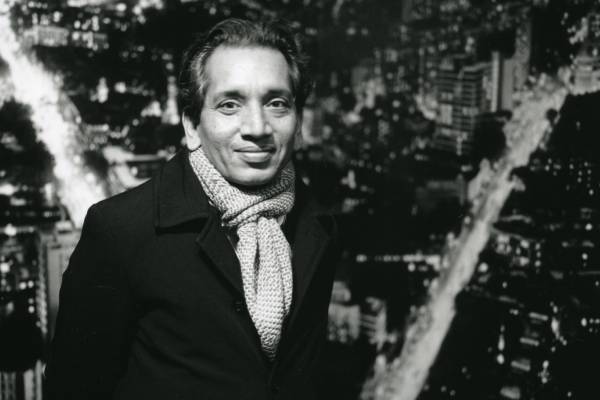
Deepak Ananth is an art historian and independent curator based in Paris. He was educated at the Universities of Bombay (St. Xavier’s College) and London (The Courtauld Institute of Art). He teaches the history of modern and contemporary art at the Ecole Supérieure d’Arts et Médias in Caen, Normandy.
He has written on a range of modern and contemporary European and Indian artists, mostly for museum publications. These include essays on Henri Matisse, Pablo Picasso, Édouard Vuillard, Pierre Bonnard, Howard Hodgkin, Sarkis Zabunyan, Anish Kapoor, Amrita Sher-Gil, Nasreen Mohamedi, Mrinalini Mukherjee, Umrao Singh Sher-Gil, Raghubir Singh, Dayanita Singh, Dileep Prakash among others. His essays have been published in catalogues accompanying monographic or thematic exhibitions at Museé national d’art moderne, le Centre Pompidou, Paris, Haus der Kunst, Munich, Tate Modern, London, Mori Museum, Tokyo, IVAM, Valencia, the Nationalgalerie, Berlin and The Metropolitan Museum of Art, New York. His monograph on the painter Arpita Singh was published in 2015.
His curatorial projects include exhibitions of contemporary French art, 19th century French painting, Surrealist photography, the drawings of Roland Barthes, the place of India in the Western imagination (Indomania, Brussels, 2013) and numerous exhibitions of contemporary Indian art following Indian Summer (Paris, 2005). He curated the survey show of Vivan Sundaram, Disjunctures, at the Haus der Kunst, Munich in 2018.
Photo by Dayanita Singh
Travel grant supported by GALLERYSKE and PHOTOINK
![]()
![]()
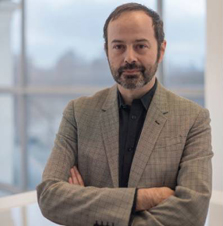
Quentin Bajac (Jury Chair) Born in 1965, a graduate of the Institut d’Études Politiques de Paris and the Institut National du Patrimoine, Quentin Bajac became curator of photography at the Musée d’Orsay in 1995, before moving to the Pompidou Centre in 2003. He held the chair in the History of Photography at École du Louvre and in 2010 he was appointed Chief Curator of Photography at the Pompidou Centre. From 2013 to 2018, Quentin Bajac was Chief Curator of Photography at the Museum of Modern Art (MoMA) in New York. In March 2019 Bajac was appointed the Director of the Jeu De Paume in Paris.
He has curated numerous exhibitions on 19th century and contemporary photography, including A World of Its Own: Photographic Practices in the Studio (2014), Scenes for a New Heritage: Contemporary Art from the Collection (2015) and most recently, Stephen Shore (2018). He was co-curator of the exhibition Being Modern: MoMA in Paris, at Fondation Louis Vuitton (2017).
Quentin Bajac has authored many books including Parr by Parr: Quentin Bajac meets Martin Parr (2010), Brassaï, Paris Nocturne with Sylvie Aubenas (2013) and Robert Doisneau: Pêcheur d’images (2012). He is also the author of a three-volume history of photography (Découvertes Gallimard, 2000-2010). He has written articles on photographers and artists who used photography such as Alexander Calder, Man Ray, Lucien Hervé, Henri Cartier-Bresson, Luigi Ghirri, Karen Knorr, Mimmo Jodice, Lise Sarfati, Hiroshi Sugimoto and Luc Delahaye.
Travel grant for the jury chair is supported by Ambassade de France en Inde and Institut Français, India
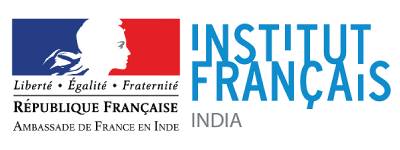
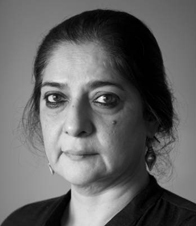
Sheba Chhachhi’s Born in 1958, Sheba Chhachhi’s lens-based works investigate contemporary questions about gender, the body, the city, cultural memory and eco-philosophy, through intimate, sensorial encounters. Chhachhi began as an activist and photographer, documenting the women’s movement in India. By the 1990s, she moved to creating collaborative staged photographs, eventually turning to large multimedia installations. Her works retrieve marginal worlds: of women, mendicants, forgotten forms of labour, and often draw on pre-modern thought and visual histories, interweaving the mythic and the social. She experiments across the spectrum of durational mediums, creating immersive environments, which bring the contemplative into the political in both site-specific public art and independent works.
Chhachhi has exhibited widely in India, and internationally, her works are held in significant public and private collections, including Tate Modern (UK), Kiran Nadar Museum of Art, (Delhi), Bose Pacia (New York), Singapore Art Museum, Devi Art Foundation (Delhi) and National Gallery of Modern Art (India). Chhachhi has published writings, given talks and conducted workshops, research and projects relating to women, conflict, urban ecologies, visual culture and contemporary art practice in both institutional and non-formal contexts. She lives and works in New Delhi.
